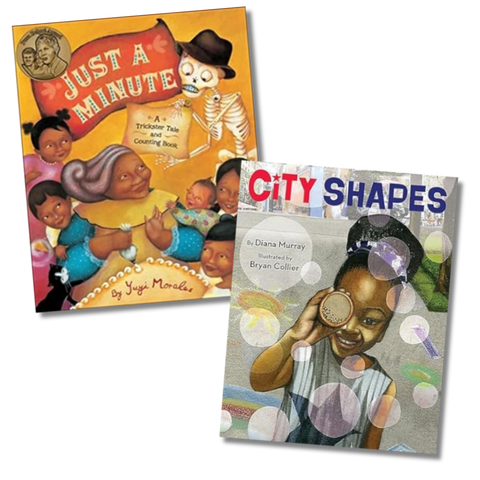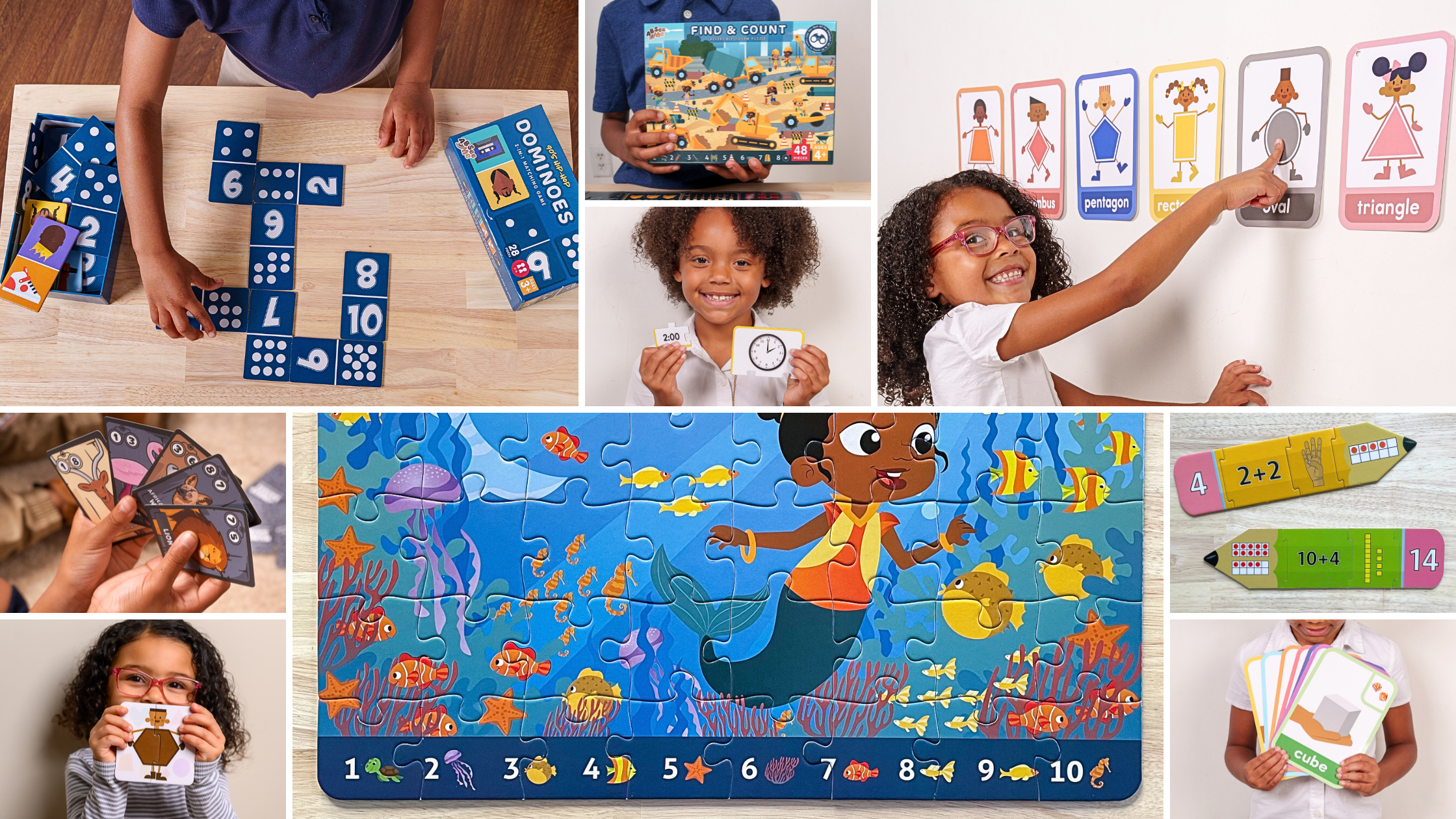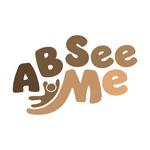
Culturally Responsive Math: 5 Strategies for Inclusive Math Instruction in Early Childhood
Culturally Responsive Math: 5 Strategies for Inclusive Math Instruction in Early Childhood
In today's diverse classrooms, fostering an inclusive learning environment is paramount. Culturally responsive teaching in math education plays a crucial role in ensuring that all students feel valued, respected, and empowered to succeed. In this blog post, we'll explore practical strategies for early childhood that incorporate cultural responsiveness into math instruction, enhancing engagement, understanding, and achievement for students from diverse backgrounds.
Understanding Cultural Responsiveness in Math Education
Cultural responsiveness in math education goes beyond simply acknowledging diversity; it involves actively incorporating cultural elements into teaching practices to make math more accessible and relevant to all students. By recognizing and valuing students' cultural backgrounds, educators can create a learning environment where every child feels seen, heard, and supported.
Culturally Responsive Math Teaching Tips
-
Incorporate Cultural Examples in Math Problems
When crafting math problems, educators can incorporate cultural contexts and experiences to make the content more relatable and engaging for students. By using examples that resonate with students' cultural backgrounds, educators can enhance understanding and encourage active participation in math learning.
Tip: Try integrating real-life scenarios and examples from various cultures to illustrate math concepts, making learning more relatable and engaging for your learners. Instead of using generic word problems, such as "John has five apples and gives three to his friend," educators can create scenarios that reflect diverse cultural experiences. For instance, "Maria is preparing for a traditional celebration and needs to divide 15 empanadas equally among her family members. How many empanadas will each person receive?" This example not only reinforces division skills but also celebrates cultural traditions.
-
Weave Math Concepts Into Cultural Holidays and Explorations
Integrating cultural holidays and traditions into math lessons provides students with opportunities to connect mathematical concepts to real-world experiences and cultural practices. By incorporating culturally relevant content, educators can promote cultural awareness and foster a sense of pride and belonging among students.
Tip: Create math-related projects or assignments that celebrate cultural events and observances, fostering a sense of pride and connection among students. During Black History or Women’s History Month, you can introduce math activities that celebrate the contributions of mathematicians and scientists. Young learners can also explore the mathematical concepts behind African geometric patterns or calculate the dimensions of historical landmarks such as the Great Pyramid of Giza while studying shapes!
A Fun Math Game to Play = Mancala: Originating from Africa, Mancala is a strategic counting game played with a board and stones or seeds. Players take turns strategically moving pieces around the board, aiming to capture their opponent's pieces while trying to collect the most seeds. Mancala not only reinforces counting and strategy skills but also offers a glimpse into the rich cultural heritage of Africa.
-
Use Culturally Relevant Math Resources
Selecting math resources that feature diverse representations and perspectives is essential for creating inclusive learning environments. By incorporating culturally relevant literature, visuals, and materials, educators can provide students with varied perspectives and experiences that reflect their own cultural backgrounds.

Tip: Incorporate culturally relevant math literature and materials into lesson plans to provide students with varied perspectives and experiences. Instead of relying solely on traditional textbooks, try supplementing your math instruction with culturally relevant resources such as children's books, posters, and multimedia content. Below, I've listed a few culturally responsive picture books you can incorporate into your math instruction:
Culturally relevant math read alouds for early childhood:
-
Round is a Mooncake: A Book of Shapes by Roseanne Thong
- Explore shapes from a multicultural perspective with this delightful book that takes readers on a journey through a young girl's neighborhood, where she discovers shapes in everyday objects inspired by Chinese heritage.
-
Round is a Tortilla: A Book of Shapes by Roseanne Thong
- Another book by Roseanne Thong that celebrates shapes, from round tortillas to a bowl of abuela’s stew, that are found in Latinx culture. Readers can practice identifying shapes and making connections to their surroundings.
-
Island Counting 1 2 3 by Frane Lessac
- Join in the adventure of counting tropical treasures in this vibrant book that introduces numbers and counting through the sights and sounds of island life in the Caribbean.
-
A Big Mooncake for Little Star by Grace Lin
- Follow Little Star as she learns about the phases of the moon through a delicious mooncake her mother makes. This beautifully illustrated book introduces concepts of time, cycles, and fractions in a culturally rich setting.
-
Just a Minute!: A Trickster Tale and Counting Book by Yuyi Morales
- With its vibrant illustrations and captivating storytelling, this authentic trickster tale pays homage to the vibrant traditions of Mexican culture while offering a delightful opportunity to explore counting in both English and Spanish.
-
City Shapes by Diana Murray
- As a young girl strolls through her neighborhood, everyday scenes transform into extraordinary sights—from towering skyscrapers to soaring kites to glittering stars in the night sky—revealing captivating new shapes around every corner.
-
One Grain of Rice: A Mathematical Folktale by Demi
- Set in India, this folktale introduces the concept of exponential growth as a clever girl outsmarts a selfish raja by asking for one grain of rice doubled each day for thirty days.
-
Facilitate Culturally Responsive Math Discussions
Facilitating classroom discussions that explore the cultural significance of mathematical concepts encourages students to share their perspectives and experiences. By engaging in meaningful conversations, students can deepen their understanding of math concepts while developing empathy and cultural competence.
Tip: Encourage students to share their cultural perspectives and experiences related to math topics, promoting a deeper understanding and appreciation of diverse backgrounds. For example, after learning about geometric shapes, you can initiate a discussion about how different cultures use geometric patterns in art and architecture. Students can share examples of symbols and shapes they've encountered in their communities, fostering a greater appreciation for cultural diversity.
-
Provide Multilingual Math Support
Offering math vocabulary and materials in multiple languages supports English language learners and students from bilingual backgrounds. By providing resources in students' native languages, educators can ensure equitable access to learning materials and promote academic success for all students.
Tip: Enhance inclusivity in your classroom by labeling math posters and instructional materials, such as shape diagrams, with your students' home languages. This thoughtful gesture not only honors linguistic diversity but can also aid your learners in grasping mathematical concepts within a context they find familiar, fostering a deeper understanding and engagement with the material.
Benefits of Culturally Responsive Mathematics Teaching in Early Childhood
Culturally responsive math teaching offers numerous benefits for both students and educators. By embracing cultural diversity in math instruction, educators can enhance student engagement, motivation, and academic achievement. Moreover, culturally responsive teaching promotes a sense of belonging and inclusion, fosters cultural awareness and understanding, and strengthens teacher-student relationships and classroom community.
Introducing: ABSee Me's Culturally Relevant Math Activities for Preschool and Elementary

At ABSee Me, we're committed to making math instruction more inclusive and relevant by incorporating diverse content and characters into our educational resources. Our range of engaging math products includes 90’s Hip-Hop Dominoes, Find & Count Puzzles, Shape Pals Puzzles, Place Value Pencil Puzzles, Time Puzzles to the Half-Hour, Number Safari Go Fish Game, and 2D and 3D Shapes Bulletin Board Sets. These resources are perfect for use in math centers or as vibrant displays in the classroom, providing students with interactive learning experiences that celebrate diversity and promote mathematical proficiency. Explore our shop to discover these enriching resources and transform your math instruction today!
Conclusion
Incorporating cultural responsiveness into math teaching practices is essential for creating inclusive and enriching learning environments where all students can thrive. By implementing the strategies discussed in this blog post, educators can empower students to succeed academically while fostering a deeper appreciation for cultural diversity. Let's embrace the power of culturally responsive math teaching and work towards a future where every child has the opportunity to excel in mathematics, regardless of their cultural background.



